
You’ve done the work and you have a great product. Now it’s time to get the buyers. In this post, I will show you 15 tactics that can help you get buyers for your products.
Have you ever tried to sell something and received a blank stare? Maybe they can’t see the value, or they don’t understand how it works. Or maybe they don’t like what you are selling. That doesn’t mean your product isn’t valuable, but sometimes people just aren’t sure what they want…yet.
How do I find a buyer to buy my product? How do you get a stranger to buy your product? How do I find online buyers? How do you gain buyers? are some of the questions you might be having in your mind.
When you’re trying to get buyers for your products, it’s difficult to get in front of the right prospects. You have to have a good plan in place and know what tools you need to use before landing on someone’s email inbox with an offer they can’t refuse (or at least needs some persuading).
We’re going to look at the best tactics to get buyers for your products. These aren’t just tactics that work every time — they have an effect on different types of people.
1. Focus on your buyers’ main issue and offer a solution to it.
Many times, when we are selling a product, we forget to focus on our prospects’ lives and dreams. We focus on the features of the product that are important to us, and what each individual band can offer people who will buy our products.
However, the reality is that even if we do everything right, there are always people who hate what you’re offering but love what they do.
So, the best way to help sell your product is to first present it in a way that makes your prospects believe that they can live their life better with your products.

As Theodore Levitt, an American economist, and professor at Harvard Business School, once said: “People don’t want to buy a quarter-inch drill, they want a quarter-inch hole.”
The question every business owner should ask is, “What do we want to achieve by building this product?”
Related: Why You Need to Sell the Problem Before You Can Sell Your Solution
This is where personas come in handy. They humanize otherwise abstract data by representing groups of end users who may use your product in similar ways.
Personas are fictional characters based on research, previously collected data, and real-life interviews. Their segmentation is typically based on goals, attitudes, and behaviors. When you give personas names, photos, and demographic information, they become more realistic. They are effective because they bring together teams, create a shared vision of the target audience, and encourage everyone involved to consider the actual users.
Consider Seema, a 42-year-old homemaker who works part-time as a freelance content writer. Seema feels guilty for not spending enough time with her husband, Manu, and their three children, Rohan, Raju, and Dev. She must manage both her home and her family. Her job is just as demanding. She has a demanding job and an occasional commute, so she gave up traditional shopping a long time ago. She now does her grocery shopping online. Seema appears to value her time. “Time is money,” she proclaims. She wishes to shop online as soon as possible.
Consider an e-commerce platform optimized for her smartphone that can learn what she needs on a regular basis and assist her in completing the shopping process faster. She’d have more time to devote to her family.
There are a lot of Seemas out there, as well as a lot of other personas. Before adding a feature request to the product backlog, consider how that feature will solve a Seema’s specific problem. Companies can make better product decisions and decide what is truly important by focusing on the needs of the personas most likely to use your product.
Talk about how your product can take them to the transformed self or exotic experience or promised dream life. Show them the pictures of them in terms of what the prospects want and why your solution is the best one.
What you should do is highlight the benefits of your product in the most straightforward way possible.
Avoid all jargons.
Appeal to their desire to be more attractive, sexier, healthier, and more successful. Anyone can rattle off a list of features about their products or services that will help prospects understand what you have to offer.
People, on the other hand, are more interested in the results than the features.
To put it simply, you can sell concert tickets or an experience they’ll never forget watching one of their favorite bands at an awesome venue.
For a more specific example, you could sell software or a method to save time and money, resulting in a better work/life balance and happier employees.
Related: 9 Useful Products That Will Solve Your Everyday Problems

People nowadays want something that will make their daily lives easier. They are looking for tools and products that would make their lives easier or more efficient.
Life is too short to waste time on boring and subpar products.
Problem-solving products are designed to address issues that arise in everyday life. People go crazy over such products.
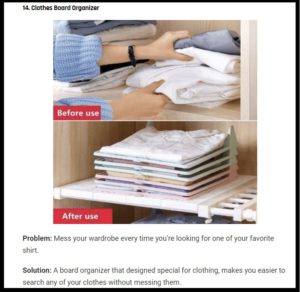
The best way to get buyers for your products is to show them what they’re missing out on.
You need to pique their curiosity, not just tell them about your product.
Use past successes (your own and others) as a guide.
Show buyers how they could become more successful by reading your description or whitepaper.
Don’t forget you are their salesperson too!
Be transparent about your product’s capabilities and capabilities, even if it means showing off some of your own skills and expertise.
Related: Building a Product That Solves a Problem
2. Add a Mental Trigger to Get People Buy Your Products
Companies are constantly refining their approaches to gaining customers and their loyalty. Buyer psychology has emerged as a critical consideration for companies looking to improve their marketing, branding, and customer relations. If you want to better understand your customers’ motivations, you should familiarise yourself with the concept of buyer psychology. If you want to get more buyers for your products, you have to implement buyer psychology in your business communication.
What exactly is buyer psychology?
Buyer psychology is a field of study that combines economic, psychological, and communication insights. It seeks to comprehend how people form opinions about a brand and its products, as well as how those opinions translate into purchasing decisions.
Most businesses previously believed that simple economic reasoning drove consumer behavior.
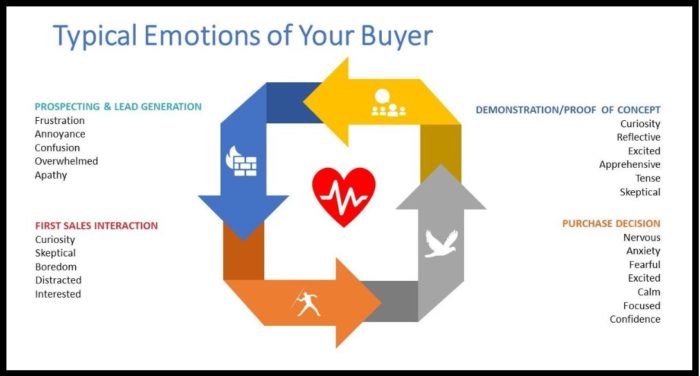
For example, a company may have assumed that consumers prefer its competitor because its costs are lower. That company would lower its prices and use traditional advertising to inform the public of its new rates.
Businesses now recognize that many factors other than price influence customers’ decisions and that traditional advertising isn’t the most effective way to change their minds.
Buyer psychology is also becoming more important as more marketing is conducted online, where consumers can research and review businesses without relying on traditional advertisements.
If there is a disconnect between how a company presents itself and how it treats customers, customers quickly learn and shift their attention to other brands.
Aligning a brand’s mission, product, and user experience necessitates understanding how consumers think and what they prioritize when shopping.
Related: Buyer Psychology & How Consumers Decide to Buy
How to Understand Buyer Psychology
Here are some pointers to help you understand buyer psychology and apply it when creating action plans:
Consider both emotions and facts to be equally important
The price of your products is important, but consumer emotions are more important. In fact, emotions frequently have a greater influence on consumers than price. Several emotional dynamics can be the primary motivator for a purchase or a refusal to purchase.
Love for a product: Strongly positive emotions can overcome cost concerns and give your company more pricing flexibility. If you believe you can introduce an exceptional product at a higher price than usual, don’t dismiss the possibility that it will be worthwhile.

We carefully select and present gifts to our loved ones at Christmas, birthdays, anniversaries, and other special occasions. It’s something we do naturally, and most of us don’t consider the implications. However, the gift we select and how we present it reveals a lot about us, our relationships, and the complex social structures that exist in our community. Social, psychological, and emotional currents lurk behind every perfect present.
A brand’s loyalty: Loyalty leads to repeat customers, which are critical to the success of most businesses. Considered customer service, consistent product quality, and an authentic voice all contribute to relationships in which consumers are willing to pay more to support a trusted brand.
Disappointment: Customers have well-defined expectations, which are frequently based on what a company promises them. Violation of the contract that a purchase represents creates deep mistrust that is difficult to overcome, even with low prices.
Feeling unappreciated: When customers feel unappreciated, they may incur significant costs in order to express their dissatisfaction. For example, if their local mechanic does not treat them well, customers may spend time, effort, and money driving longer distances to find the same car repair services they could get nearby.
Use novelty to add value
Why else would millions of people pay $5 for a cup of coffee at Starbucks or another specialty coffee shop when they can get one for $1 elsewhere?
It all comes down to perception, and how you make your customers feel when they buy your product or service will keep them coming back for more.
Customer perception is defined as a marketing concept that includes a customer’s impression, awareness, and/or consciousness about a company or its offerings. Advertising, reviews, public relations, social media, and personal experiences all have an impact on customer perception.
The experience of something new has a profound effect on people’s memories. Customers will remember companies that introduce products with unexpected and creative features. Even if your product isn’t particularly innovative, you can use marketing to highlight its novelty.
Consider creating a page dedicated to your most recent releases if you run an online store. To generate excitement among your customers, you can tag items as new on social media or introduce multiple new products at once.
Here’s an example of an unforgettable experience:
This is an excellent example of selling an experience. It is not so much what Disney does as it is why they do it that makes their theme parks so successful. It’s not a twisting roller-coaster ride. It’s all about spending quality time with your family and seeing your favorite movies come to life. The price of admission is $105 per person per day, but the memories are priceless. And you’ll be there for five days.

Another example:
In Bohol, you can find a stylish tropical resort that offers a unique glamping experience. Try glamping at least once in your lifetime and Glamping Alona is the place to be. This glamping resort in Panglao will surely give you a vacation to remember. It promises a fun, exciting, and stylish glamping experience.
Is it any easier to buy just about anything you want with a single tap on your phone and have it delivered to your door two days later, with no shipping fees? Amazon is constantly innovating the customer experience by tracking your purchases and making helpful recommendations for your next purchase. They are taking it a step further by investing in drone delivery, which will enable instant delivery in the near future. Online retail is not a new concept, but Amazon does it so well that it outsells the next twelve largest online retailers combined!
Adding novelty helps in getting more buyers for your products.
Consider loss aversion
Loss aversion is a psychological principle that describes how many people go to great lengths to avoid losing something valuable to them, such as money.
When consumers are unsure about the quality of a product, their fear of loss influences their willingness to buy.
Quality guarantees and flexible return policies help to alleviate the stress that many buyers feel when shopping.
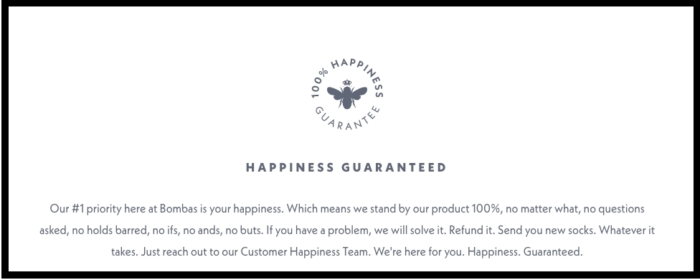
Loss aversion can also work in your company’s favor. If customers believe your product is in short supply, the desire to not miss out on an opportunity may motivate them to purchase.
Consider offering products as part of a limited release, and make sure you’re transparent about your inventory status by notifying customers when a product is about to sell out.
Related: 15 Psychological Triggers to Convert Leads into Customers
Create a sense of collective action
People value the sense of belonging that comes with participating in communal activities or trends.
Many businesses display customer testimonials and reviews to instill trust in their products, but doing so has an impact on buyer psychology. When customers see people they admire or trust enjoying your product, they are more likely to try it themselves.
This buyer psychology insight has contributed to the rise of social media influencers who build their own communities and guide their followers to trusted brands.
Use communal language to invite customers into your brand whenever possible.
Consider forming partnerships with influencers and content creators who could review or model your product, if appropriate.
Meet both short- and long-term objectives
Consumers frequently evaluate purchases from two perspectives.
When they are thinking in the short term, they browse products to learn about options and envision the gratification that a purchase would provide.
When evaluating the long term, they want to know that a product will last for years and provide them with enjoyment over time.
You can address this aspect of buyer psychology by emphasizing the durability and versatility of your product in marketing efforts.
Share customer testimonials from customers who have been loyal to your brand for a long time, and communicate your commitment to customer service so that customers can be confident in their investment. And you get buyers for your products.
Remove any sources of discomfort
Customers are irritated by pain points in the user experience. They disrupt the purchasing process and introduce doubt into transactions, resulting in lost revenue.
For example, someone may want to buy a sweater online and expect the retailer to provide a size chart. If one is not available, the consumer is unlikely to risk ordering the incorrect size and decides not to purchase.
Ensure that your customers’ experiences are as simple as possible by providing them with all of the information they need to make a purchase, such as pricing structures, return policies, and product specifications. Inquire about the users’ pain points and prioritise finding solutions.
3. Create A Sense Of Urgency
A sense of urgency can push your customers to make a purchase right here and right now.
Our calls to action are one of the most obvious places to include implied urgency (CTAs). While headlines can be CTAs, I’m really talking about transactional CTAs like “Buy it now!” buttons.
One of the most effective ways to add genuine urgency to your landing pages is to warn visitors that if they do not act quickly, they may miss out.
Daily specials, one-day sales, flash sales, limited-time offers, and 24-hour offers are ideal for incentivizing your followers and potential customers to pull out their credit cards and press the “Buy” button.
Amazon’s Today’s Lightning Deals are a great example.
Airlines do this all the time.
Hotel Booking sites do this all too!
Countdown timers have an incredible psychological hold over us, which is why they work so well in visualizing our internal sense of urgency. Adding a countdown timer anywhere on your site immediately increases action. Put it as a banner below the product or on the landing page.
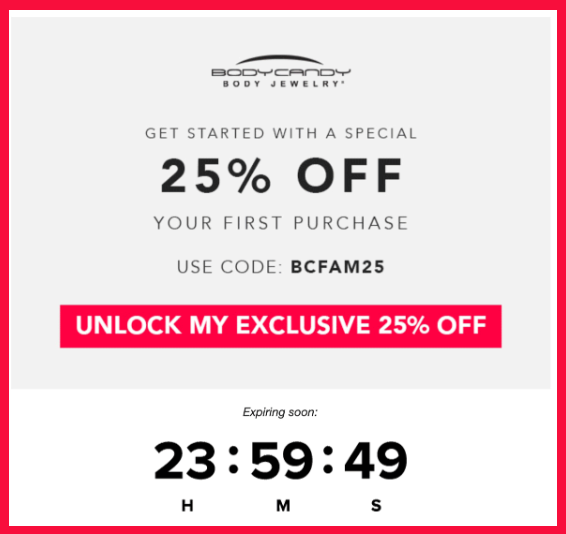
When it comes to purchasing decisions, availability is a huge factor. Your customers will naturally create their own deadline in their heads if you show that your product has limited stock, but this time without a specific date.
One-of-a-kind or exclusive products have an inherent sense of urgency simply by virtue of their name. When you create exclusive products, your store becomes the only place where that item can be purchased.

When you have the impression that other people are surrounding you, you feel a sense of urgency simply because of their imagined presence and crowding.
Booking.com accomplishes this by displaying how many other people are interested in the same deal. According to the service, those people may book your preferred dates before you do.
Related: How Creating a Sense of Urgency Helped Me Increase Sales By 332%
4. Get More Leads
Even if you have the best product in the world, your business will fail if no one knows about it. Those with the most leads are the winners. Simple. You can still win if you generate more leads but have a subpar product. Because more leads equal more revenue. And more revenue equals more profit (most of the time).
Your website is the starting point for all of your online lead generation efforts. Your website must be optimized to persuade people to take action, whatever that action may be.
A giveaway or contest can quickly generate a large number of email and social leads. It works as follows: brands provide a prize in exchange for participants referring friends, sharing content, and liking your social media profiles.
Consider deploying both inbound and outbound marketing in a balanced manner to help generate leads and, eventually, your business. Invest in marketing efforts that use emerging technology and channels to generate more leads for your company.
Tip: I use GrooveFunnels to generate more leads. Start a free trial here.
Twitter and LinkedIn are not only social networking sites, but they can also provide your company with potential leads. Using these platforms, you can capture leads. Additionally, use hashtags to make your content easier to find. The more often you are discovered, the more leads you will receive. Use databases as well.
It is undeniable that content can be an excellent source of web traffic, resulting in more leads. However, it must be informative and appealing to your target audience
Quora is a question-and-answer social networking site where millions of people from various demographics post daily questions. If you answer enough user questions, they will notice your profile and most likely visit your website.
Writing blog comments can help you get your name out there and eventually generate leads. People will want to see what you have to offer if you are helpful and generous with your comments. You can also use this strategy within relevant groups and forums.
Guest blogging can help with lead generation. Make your email signature more effective by including a link that takes the reader to related content. The possibility of maximum web traffic flow towards your content will be increased with the help of link integration.
Contact influencers who your customers admire and conduct interviews with them for your blog or social channels. This will be seen as proof of your credibility by potential customers, increasing your chances of attracting new leads.
YouTube is a massive search engine as well as a video hosting service. It has more users than any other social media platform, including Facebook, Twitter, and Google+. In comparison to other social networking platforms, all posts stay up for a very long time. As a result, in the long run, this is the best channel for sending referral web traffic. This platform allows you to create and manage your own channel where you can share videos about specific events, important tutorials, and other things. This will help you differentiate yourself from your competitors and attract more leads to your company.
Related: How To Generate Leads For Your Business – Lead Generation Strategies, Tips And Tricks
5. Offer Discounts On Bulk Orders
Bulk purchases benefit sellers and their customers. They boost the sales without the need to increase traffic, and their customers get a higher purchase value. Encourage customers to buy more products in one session. It’s a win-win deal.
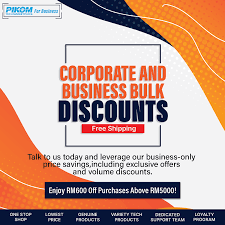
Age-old techniques like flat and percentage discounts and group-based discounts effectively increase average product purchases.
Provide tier pricing discounts. Customers who spend less than $100 receive a $5 discount, while those who spend more than $100 receive a $10 discount.
Giving a bulk discount is a tried and true strategy for Shopify store owners, Amazon sellers and e-commerce in general. It’s a great way to get buyers for your products.
6. Connect With Your Audience and Customers
According to Brian Tracy, a Canadian motivational speaker, “approach each customer with the idea of helping him or her solve a problem or achieve a goal, not of selling a product or service.”
We are all bombarded with sales and, as a result, mostly ignore them. To sell a service, one must first understand the human condition. If you connect your product to their story, you are more likely to foster long-term loyalty.

We often hear “engage with your audience on social media and build relationships”.
If you don’t have a customer in mind, you won’t be able to connect with them effectively. Survey current customers and members of your target market to learn how you can better present your product or service, as well as what aspects may be missing from what you currently offer. You can start marketing once you know who your audience is, where they hang out online, and what they respond to best.
Plan relevant posts, link to interesting articles, respond to customer questions as soon as they are asked, and otherwise give online visitors the impression that there is a human who cares.
Always answer the phone, care for your customers, and solve problems as they arise — your customers will appreciate it.
Interact with your audience constantly: fostering new relationships, nurturing existing ones, and listening/responding to feedback. You can build trust and rapport and your social reach will grow.
You may not believe that people are interested in your company or what you have to say, but they are.
I’ve come across followers who had never once interacted online on my social platform but were consistently following my feed and reading every post for 2-3 years.
Go ahead and make an inside joke that only your audience will understand the next time you write an article!
Alternatively, if you’ve recently dealt with a problem that your audience can relate to, tell them about it and explain how you solved it.
You can also solicit advice from your readers on how they solved the same problem.
Stories help you connect with your audience and customers at a deeper level, and it aids to get buyers for your products.
Related: 10 Tips for Storytelling in Content Writing to Win the Audience
7. Provide Value
“Someone is closing deals today, regardless of the weather, economy, politics, or any other excuses. Get out there and add value to people’s lives by helping them move forward toward their financial freedom, peace of mind, and legacy.” – Farshad Asl
The idea of value-added selling has been around for a while.
Whatever product or service you sell, you can add value to it.

To be able to provide value as a salesperson or marketer, you must understand that you must provide a level of advice that is significantly higher, more sophisticated, and far more valuable than that of your competition.
Recognition and reward levels, and frequent buyer programs, are examples of value-addition ideas that you too can consider for your business.
Value-based marketing plays a moor role to get buyers for your products.
Related: Value Marketing: Why you need a Value-Added Marketing Strategy

Get FREE Access Now: 100 Effective Marketing Strategies To Get More Clients For Your Micro or SMB Business
8. Increase the Number and Size of Transactions
The small things in life, like many others, can quickly add up to something significant. A similar line of thought as a business owner can quietly help sales skyrocket. You can apply the same idea to increase the number and size of transactions in your business via cross-selling, upselling, adding high-ticket items to your product list or menu, promotions, sales, and loyalty programs.
Make a plan for your point-of-sale marketing. The area surrounding your point of sale is an easy target.
A paint shop always keeps essential products on hand for basic jobs that customers frequently overlook in this area.
Landscaping gardens display their gloves and seed packets for customers waiting in line.
Supermarkets keep candies and chocolates near the cash counter.
This is also something to consider when designing your store’s layout in order to optimize your overall retail marketing strategy. The $5 box of crackers next to your best cheeses is difficult to pass up.
Include High-Ticket Items on Your Menu. This is especially true for quick-service establishments such as coffee shops and bakeries. There is plenty of room to raise the average transaction value from $3 to $4. A 25% increase for the customer at that price is barely noticeable, but as the business owner, it would result in a massive increase in revenue. A few more expensive items will help. Even if those items don’t fly off the shelves, they make the lower-priced items appear cheaper and easier to add to the cart.
Choose high-margin items that everyone requires for your promotion, but make sure they are low-priced items that buyers will not hesitate to purchase alongside other items they came for. Remember to promote flash sales on your social media platforms. Restaurants, coffee shops, and bakeries, for example, frequently use social media to inform nearby customers about specials of the day.
Offering quantity or bulk discounts works especially well with consumable products where buyers tend to stock up or have recurring needs, and online services world.
9. Develop Your Competitive Advantage
For small businesses, competitive advantage is more than just something to be able to quote to investors or include in a pitch deck. It will almost certainly serve as a key component of your elevator pitch, and taglines, and typically serves as the foundation of your business model, as well as the essence of your strategy, messaging, and marketing.
In today’s highly competitive market, if you don’t have a clear advantage, you probably don’t have a viable business. Or, in the words of Jack Welch, “If you don’t have a competitive advantage, don’t compete.”
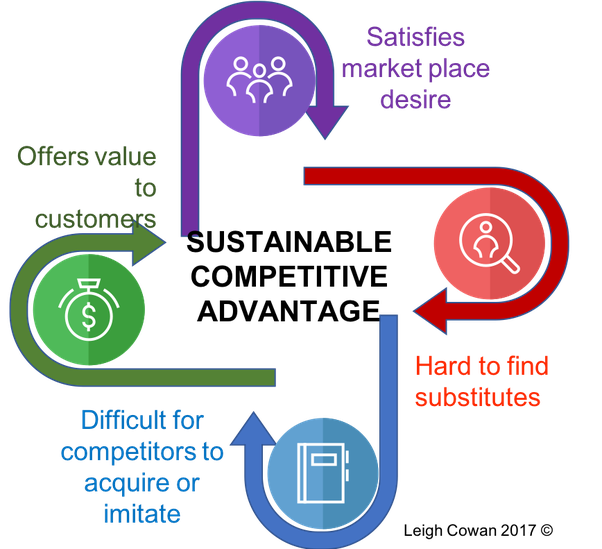
Tom Searcy, the founder of Big Hunt Sales, suggests defining your competitive advantage in terms of a customer-focused statement.
Specialization and differentiation are the most common small business strategies to build a competitive advantage.
What you are better at than anyone else is your competitive advantage. The better you are at developing and promoting your competitive advantage, the more likely your business will succeed. Having a competitive advantage over your competition aids you get buyers for your products.
10. Invest In Yourself
Investing in yourself means preparing for any new venture, overcoming any obstacles, and identifying opportunities where none appear to exist.
I left my steady and secure college job to care for my newborn, and later became a marketing strategist for small and medium-sized businesses. My life experiences taught me the importance of investing in myself.
My career as a lecturer helped me understand the value of continuous self-learning and a sense of hope for the students. It helped me massively when I quit carving my own path. My tenure as a freelancer has taught me a lot about content writing and handling clients. As an SMB Marketing Strategist, I help women learn the value of upskilling and being the best versions of themselves to attain phenomenal success in life and business.
Investing time in myself has helped me understand what I love even more and to teach others what I know. I’ve had many setbacks in my career; however, since focusing on myself, I’ve been able to identify areas in my strategies that I may have overlooked. I’ve learned that all of the skills I’ve acquired over time are not time-bound; I will never lose them or stop using them in whatever field I pursue.
Related: Invest In Yourself: 7 Reasons To Become Awesome!
If I’ve learned anything from reading books and listening to successful leaders and entrepreneurs, it’s that the more you learn, the more confident you become and the more you have to offer. Today, I can comfortably hold conversations on a wide range of topics, making it easier to network and grow your business. Being a consultant and coach, on the other hand, has allowed me to connect with and learn more about the people I have assisted. It is all about learning from one another; investing in yourself is critical, and you must also learn to share your knowledge with others so that you can learn from them as well.
When personal mastery and professional expertise become your strongest virtues, they open the door to many avenues of income that you would not consider otherwise if you were bound to a life of debt and 9-5.
Related: Investing In Yourself Will Actually Make Your Life Better
11. Offer a Guarantee
If you want more sales and conversions but your customers are hesitant, offer guarantees that compel them to buy. Before deciding to buy, a customer wants to know that they will receive what they expected after making the purchase. The customer’s expectation is determined by the customer and the product being sold. Some people anticipate that their purchase will enable them to achieve specific outcomes.
Others anticipate that the purchase will make them happy, while others anticipate that the purchase will provide them with gratification. They, however, want to avoid one thing: feeling guilty after making a purchase.
You must persuade them that they will not be sorry if they make the purchase. If you can do that, most customers will gladly give you their money. The question is, how do you do it?
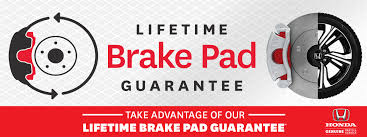
The key to convincing prospective customers that they will not be disappointed if they make a purchase is to provide guarantees that will put their fears to rest and gain their trust.
12. Offer Services as Well as Products
When Apple decided to combine the iPod product with the iTunes service, it seemed like the perfect offering. The product and service were inextricably linked—without one, the other was worthless.
Many businesses are attempting to mix products and services in order to increase revenue and balance cash flows. By providing superior value, hybrid solutions—products and services combined into innovative offerings—can assist businesses in attracting new customers and increasing demand among existing ones.
Product-Service Hybrids are not new; for years, car dealers, for example, have tied the purchase of a new car to servicing, repair, and so on. They are, however, becoming more common in the digital age. They provide the opportunity to increase profits and customer loyalty while providing increased customer value.
Take the elevators. Typically, a building owner or contractor will buy an elevator from one company and then hire a service company to maintain it. Otis has distinguished itself from its competitors by combining high-quality elevator equipment with premium service. Most competitors are strong in one area but not both. Customers who are familiar with Otis as a leader in elevator manufacturing trust the company’s service organization.

Think of ways to combine both products and services in your business to get buyers for your products.
13. Create a Sales Funnel
When making a purchase, each person has his or her own distinct process. Regardless of these differences, all customers go through the same stages that lead up to the transaction—your end goal. The sales funnel was created to assist marketers in visualizing and influencing the customer journey.
A sales funnel is a path that a company creates to guide potential customers from their first interaction with the brand to becoming a buyer.
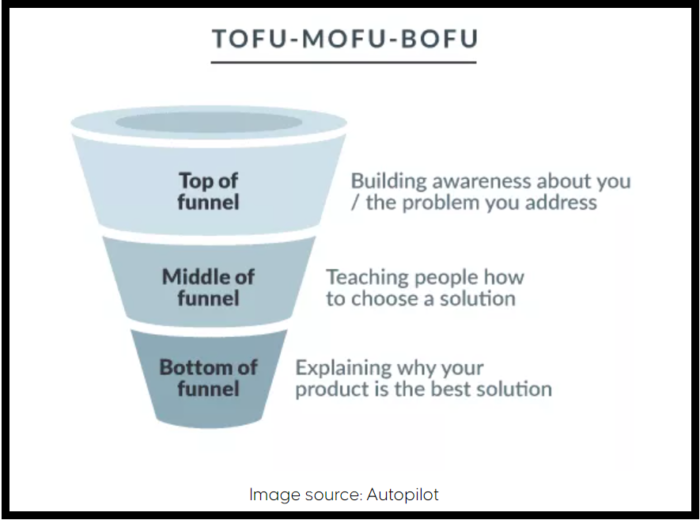
If you’re hosting a free webinar on branding, for example, you need to ensure that people 1) learn about the webinar and 2) are enticed enough by what it offers to sign up.
To drive enough awareness that new potential leads see the webinar in the first place, you may need to use a combination of ads targeting cold and lookalike audiences, SEO, and social sharing. This moves users into the funnel, where they can evaluate your landing page and website to decide whether or not to sign up.
You’ll need multiple touchpoints to generate enough traffic and interest to get results, so create an intentional, dedicated funnel; a single lead magnet on a single landing page will not suffice.
Each offer and audience niche that you connect to should have its own landing page. Consider fish farming: someone looking for fish farming classes might come across a landing page about growing fish in your backyard. It is critical to creating landing pages that are tailored to each audience niche.
You should also keep your contact forms as brief as possible. Request their name and email address. Leads will decrease significantly if the form is too long.
Having a sales funnel not only helps to get buyers for your products but also to automate your SMB marketing.
Are you spending money on advertising but not seeing the desired results?
Do you want more sales and leads but don’t know where or how to begin?
In a 60 -minute consultation call, you can get advice from our world-class marketing experts.
Now is the time to schedule your strategy consultation.
14. Leverage Social Media to Connect and Engage
Small businesses can use social media to engage in conversations with prospective customers and generate new leads. You can attract and engage your audience by creating a Facebook page, Twitter profile, LinkedIn company page, a Pinterest account, or YouTube channel, then funneling them through your process to become leads.
Furthermore, once you have leads in the system, you can use social media to communicate with them and learn more about what they require and desire. The more positive interactions a customer has with your company over time, the more likely he or she is to trust your brand and eventually buy from you.
15. Facebook Ads
Facebook ads are one of the most effective ways to generate leads. If you’re willing to pay to play, you’ll have access to more specific targeting options, such as age, location, and interests. Use best practices and stick to your data to make your ads successful and drive qualified leads to get buyers for your products.
Here are a few pointers to consider as you create your first Facebook ad:
The ad should be relevant to the content that people are clicking on. If there is any uncertainty, people are more likely to click away, assuming there was an error. Instead of blues or whites, use eye-catching, bright colors.
Run your first ad using a “lookalike audience,” which finds Facebook users who are similar to your imported customers. Understand the distinction between CPM (cost per impression) and CPC (cost per click). Before deciding between the two, read Facebook’s guide on the subject.
Conclusion
Every company requires leads. With these tried-and-true strategies, you can generate leads on a shoestring budget. Consider which ideas are most appealing to your potential customers and begin testing!
In the end, whether you’re selling products or services, whether you’re a beginner or pro, you can’t ignore effective marketing strategies. Take your time, build your presence online and offline to get buyers for your products and services.
Lead generation should be viewed as a long-term and ongoing process. Using the sales lead tips provided above, you can streamline the lead generation process and increase your opportunities for business growth.
Are you looking for more marketing advice to get buyers for your products and services? Subscribe to our newsletter! Our newsletter delivers our most useful marketing resources and practical advice directly to your inbox.

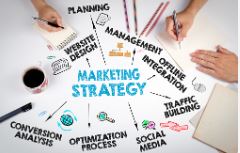
Pingback: 11 Effective Strategies to Boost Your Small Business in the Local Market
Pingback: Can You Successfully Grow Your Business Without Social Media? Discover 10 Powerful Strategies That Work! - Kavitha Rajeev Kumar
Pingback: 7 Factors to Price Chocolates for Maximum Sales And Sweet Success
Pingback: 3 Reasons Why Creating Brand Identity Leads to Success
That’s some deep insights right there! Thank you for sharing Coach.
Thank you for visiting our website!
Pingback: Top 5 Digital Marketing Career Options To Revive Your Career After A Break
Very informative
We are happy you found this useful!
Pingback: 10 Tips for Storytelling in Content Writing to win audience
Great info. Thank You.
We appreciate your visit to our website and leaving a comment here.